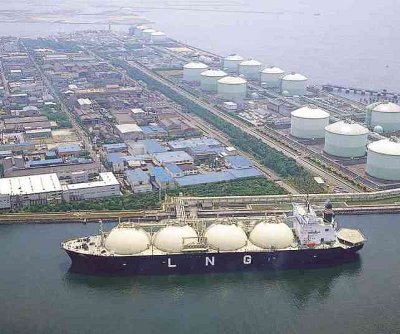On Sunday, a little bit of faith was restored to Iran as its former deputy foreign minister was elected head of a 13-nation bloc of gas producers, some of the biggest in the world.
This comes at a time when much of Iran’s own exports are diminished by U.S. and European Union sanctions over Iran’s nuclear program – sanctions that force Iran to burn off billions of dollars’ worth of fuel each year.
 With this small window of opportunity, Iran can begin to look past its sanctions, regain some trust, and hopefully start revitalizing its energy markets once more.
With this small window of opportunity, Iran can begin to look past its sanctions, regain some trust, and hopefully start revitalizing its energy markets once more.
Iran produces in the ballpark of 550 million cubic meters (19 billion cubic feet) of natural gas per day, according to StarTribune, less than 10 percent of which is exported, mainly to its neighbors in Turkey and Armenia. Iran also has plans to start shipping more gas to Iraq and Pakistan in the near-term.
Sanctions against Iran have caused a devastating blow, cutting oil exports by half since 2011 and hampering gas export projects.
Aside from major losses to revenue from exports, 400 billion cubic feet of gas was burned in 2011, the last year for which data is available, according to Bloomberg. That alone can meet a quarter of demand in South Korea, the world’s second biggest buyer of liquefied natural gas (LNG) after Japan. On the Asian spot LNG markets, that gas would be worth roughly $7.3 billion.
The reason it is forced to burn and waste this much gas is simply because it doesn’t possess the proper infrastructure to process and transport it to market.
Sanctions
Iran is right up there with the world’s largest gas producers, Russia and the U.S., but it has virtually zero presence in global markets. If it did, Iran could easily hold 10 percent of the global gas trade, as Tom James, managing director at Navitas Resources, told Bloomberg.
Yet because of Iran’s reluctance to show its nuclear capabilities, sanctions have been imposed, shutting off trade routes and energy development, including Iran’s South Pars, an extension of Qatar’s North Field that would make it the world’s single largest gas reservoir.
As a result of these sanctions, energy companies want no part of Iran.
Royal Dutch Shell Plc (NYSE: RDS-A), Repsol SA (OTC: REPYY), and Total SA (NYSE: TOT) all bailed on Iran, taking away buyers, capital, and the expertise Iran needs.
Not only has Iran lost out on a tremendous amount of business, but the increasing threat of competition from LNG projects in the U.S. and Australia is leaving it further behind.
Shell and Repsol both withdrew in 2010; Total in 2009. These companies would have given Iran a fighting chance against projects in Australia and the U.S., but now the nation finds itself back at the starting line.
The Right Fit
But all is not lost. There is still hope that peace and understanding can be found. Starting tomorrow, Iran will talk over its nuclear program at scheduled meetings in Geneva that will run through the 8th. On hand will be the U.S., U.K., France, Germany, Russia, and China.
The objective is to come to an agreement that would loosen sanctions Iran currently faces. In turn, Iran is going to have to agree to stringent inspections in order to assure more confidence in the nation moving forward.
In an effort to support and build that confidence, Mohammad Hossein Adeli, the former Iranian deputy foreign minister, has been elected secretary-general of the Gas Exporting Countries Forum (GECF), whose 13 members account for 60 percent of the world’s reserves.
GECF members include: Algeria, Bolivia, Egypt, Equatorial Guinea, Iran, Libya, Nigeria, Oman, Qatar, Russia, Trinidad and Tobago, United Arab Emirates, and Venezuela.
Adeli’s own goal will be to turn Iran into a leader amongst natural gas exporting countries. His election this past Sunday may indicate that tensions towards Iran are dissipating.
Our analysts have traveled the world over, dedicated to finding the best and most profitable investments in the global energy markets. All you have to do to join our Energy and Capital investment community is sign up for the daily newsletter below.
The Future
Of the major LNG projects Iran initially envisioned, it is down to just one, but it’s a start while the nation regains strength. A 10.5 million-ton-a-year facility known as Iran LNG is underway at Tombak, near the Gulf port of Assaluyeh, according to Bloomberg. The project will be facilitated solely by the Iranian government for $3.3 billion after it suspended a contract with its Chinese investor.
Iran LNG is under construction, but this week will prove crucial for Iran moving forward. Depending on how much headway can be made in Geneva, this could be the beginning of Iran joining the world’s good graces.
Newly-elected Adeli will do his part to access global markets, but if Iran can show good faith, there are enormous opportunities for both Iran and investors alike.
For now, companies like Shell are in compliance with sanctions against Iran. And if things do go well, it will still be some time before we see any real changes. Still, changes will come.
But by this time next week, we could all be singing a different tune.
If you liked this article, you may also enjoy:


